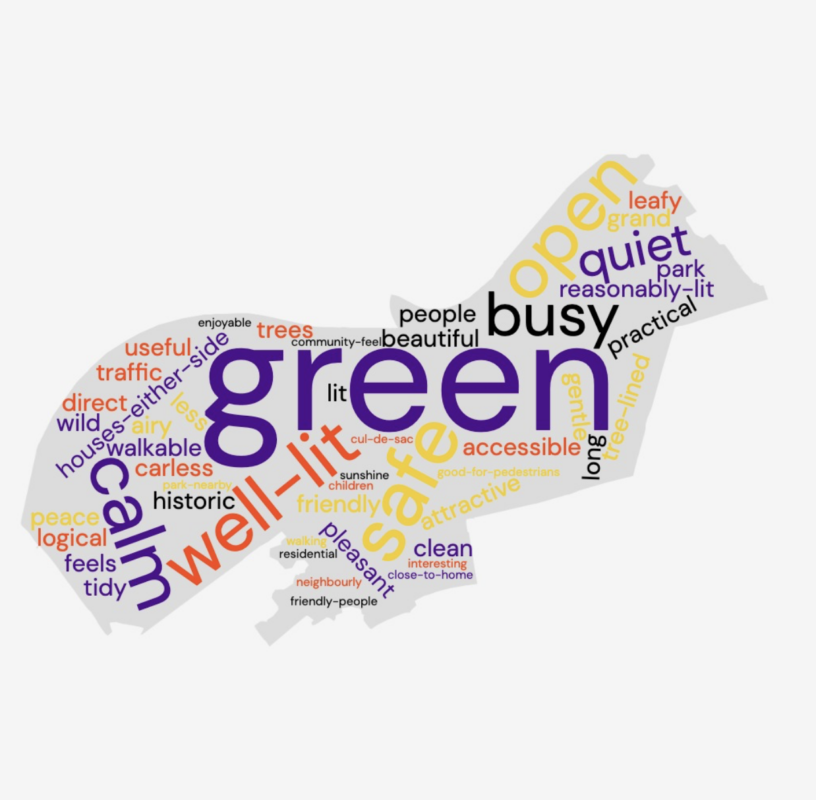As part of the ‘Right to the Streets’ project, Open Data Manchester are running a series of walkabouts – or experiential mapping workshops – in the Old Trafford, Gorse Hill & Stretford area of north Trafford, which aim to map places visited and routes taken from the lived experience of women and girls who live and work in the area.
We put out a short survey designed to not only encourage participants to sign up to a walkabout, but to give us a sense of the places people enjoy and the language used to describe those areas. The survey asks three questions:
- What’s your favourite street and why?
- Use three words to describe your favourite street.
- Do you ever make changes to your walking route? If so, why?
We then groups grouped responses into similar themes – ie “well lit” and “good lighting” are grouped together, to start to gain some initial insight This has revealed – perhaps unsurprisingly – that safety and urban environment are key factors in residents’ opinions of their favourite streets. Of the 43 responses we’ve had so far, most described their favourite street as being “green”, it “feels safe” and has “good lighting”. People and community, walkability and levels of busyness or quiet were also factors.
It’s is worth noting the presence of both “quiet” and “busy” as factors. Whereas levels of quiet are likely referring to a feature of the urban environment such as an absence of cars, busyness could be related to feelings of safety – i.e. not feeling alone . We aim to explore these more within our walkabouts.
When asking if respondents make changes to their route and why, we found that, similarly, both feelings of safety and the urban built environment factored strongly.
Those who answered said they often make changes to their walking routes based on safety concerns such as “darkness”, “feeling uncomfortable when alone” or in the presence of “a large group of men” or “drunk men”. The state of the street, such as the “presence of broken pavements” or a “lack of crossings” also influenced respondents’ decisions to change their routes.
It is also worth noting that some respondents connected feelings of safety and familiarity with their favourite streets. This highlights the importance of creating streets that are not only safe and functional, but also foster a sense of community and belonging.
Overall, although the results of the survey provide valuable information for those interested in understanding how residents (particularly women and girls) view their streets and how they navigate their neighbourhoods, the results are not that surprising. In order to make streets feel safer for women and girls, there some things that can be changed in the urban built environment – such as street lighting – but some things – such as the behaviour of others – are going to require a deeper societal shift, something that the Right to the Streets projects aims to highlight and champion.
We encourage women and girls who would like to contribute to this ongoing conversation to take the survey to share their thoughts on the streets of Trafford. Equally, you can join us at one of our walkabout workshops or visit GM Moving’s website to find out more ways to get involved in the project.

